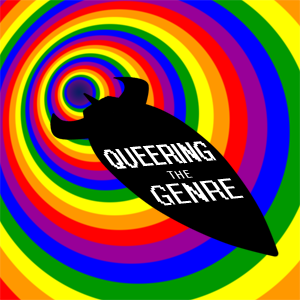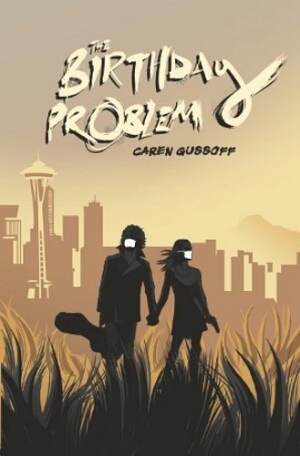In the year 2060, the next plague has arrived. MaGo bots, the nanotechnology used for everything from fighting the common cold to radical life extension, have begun to malfunction, latching onto the brain’s acetylcholine receptors to cause a permanent state of delirium.
The Birthday Problem follows four Seattle survivors: Chaaya Gopal Lee, great-granddaughter of the MaGo programmer, whom the pandemic turns into a killer; 40-something ex-rock star and pharmacy technician Greystone Toussaint, the “King of Seattle”; Alastair Gomez-Larsen, forced to become a blood-smuggler to treat his father’s liver disease; and Didi VanNess, a lovesick former-WNBA center and CNA, who tries to win back her wife’s heart against a backdrop of madness, death and 30 cats, all named Ira.
~~~~~
The Birthday Problem is Gussoff’s first novel-length work, but in many ways it isn’t a novel; the title, coming from a mathematical problem, gives away its nature, a series of linked-in-passing stories.
Gussoff has constructed a mosaic story here, which tells, in the bulk of the novel, a series of stories connected to each other by characters who pass through some, are centred in others; it’s an interesting construction that highlights how what would seem implausible coincidence in a novel is actually not only but plausible in day to day life. This is framed around an apocalypse whose scale or extent is unclear, and whose cause is uncertain; The Birthday Problem‘s biggest flaw in its worldbuilding is that, at times, it feels like it hasn’t got any. There’s the apocalypse, and there’s the world preceding it, but there doesn’t appear to be much link between the two, or any real thought about the impact of the apocalypse even on the individuals affected; and the whole thing is irrelevant to the plot, leaving one wondering why it is there. The one interesting thing about the worldbuilding is how it normalises queerness, with gay prom dates, gay married parents, and so on, all going totally uncommented on, which is a nice element.
The Birthday Problem is, though, more of a series of character studies than interested in plot or world. Each of these short character studies focuses on a different person whose life interacts with one or more of the other characters in the novel and is then drawn into more interactions; Gussoff manages this tangling of threads well. The problem is, most of the threads we don’t care about; there are very few individual voices, very little reason to care about any of the characters because they’re very much uninteresting, and very little thought given to making them more individual than just changing the names. There’s a certain superficiality to a lot of The Birthday Problem, both the author’s and the characters’, that goes utterly uninterrogated; indeed, authorial assumptions are completely unquestioned, and all the characters bar one seem to basically share an understanding of the world and a defeatist psychology in the most strange way. There’s no motivation to any of what they do, not in the sense of purposelessness but in the sense of simply author-driven action; things happen so Gussoff can, later, have other things happen and draw out coincidences.
The structure of The Birthday Problem is one I’d love to see emulated more, with its mosaic style built on unseen or unexpected links; the problem is the rest of the novel is so poorly executed that I fear Gussoff may have killed off any chances of that emulation…



Ooh, I had my hands on this at LonCon, and then I didnt buy it for whatever reason. Glad to read about someone else reading it though. Wish I had, I love PA stories, but I am not sure that this structure would have done it for me.
I picked it up at LonCon myself, yeah!